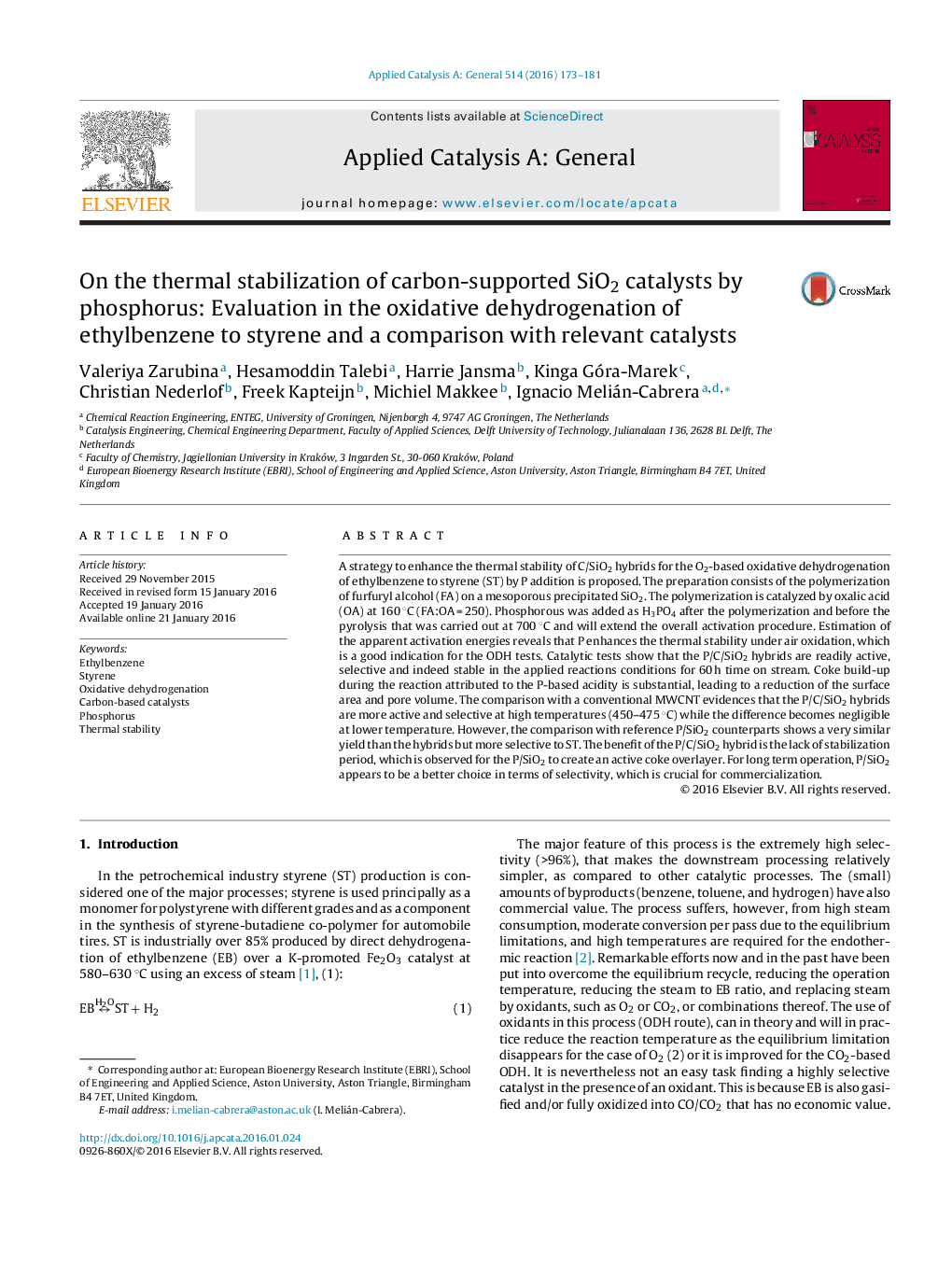| Article ID | Journal | Published Year | Pages | File Type |
|---|---|---|---|---|
| 38953 | Applied Catalysis A: General | 2016 | 9 Pages |
•P/C/silica materials have been prepared by polymerization of furfuryl alcohol (FA) on a mesoporous silica, followed by H3PO4 addition before pyrolysis.•P addition enhances the oxidative thermal stability of the FA-based carbon coating, based on the apparent activation energies.•P/C/silica materials are readily active (no induction period, as seen for P/silica), selective and stable in the long term for the ethylbenzene oxidative dehydrogenation.•Styrene selectivity of P/C/silica is better than a conventional MWCNT but lower than P/silica.
A strategy to enhance the thermal stability of C/SiO2 hybrids for the O2-based oxidative dehydrogenation of ethylbenzene to styrene (ST) by P addition is proposed. The preparation consists of the polymerization of furfuryl alcohol (FA) on a mesoporous precipitated SiO2. The polymerization is catalyzed by oxalic acid (OA) at 160 °C (FA:OA = 250). Phosphorous was added as H3PO4 after the polymerization and before the pyrolysis that was carried out at 700 °C and will extend the overall activation procedure. Estimation of the apparent activation energies reveals that P enhances the thermal stability under air oxidation, which is a good indication for the ODH tests. Catalytic tests show that the P/C/SiO2 hybrids are readily active, selective and indeed stable in the applied reactions conditions for 60 h time on stream. Coke build-up during the reaction attributed to the P-based acidity is substantial, leading to a reduction of the surface area and pore volume. The comparison with a conventional MWCNT evidences that the P/C/SiO2 hybrids are more active and selective at high temperatures (450–475 °C) while the difference becomes negligible at lower temperature. However, the comparison with reference P/SiO2 counterparts shows a very similar yield than the hybrids but more selective to ST. The benefit of the P/C/SiO2 hybrid is the lack of stabilization period, which is observed for the P/SiO2 to create an active coke overlayer. For long term operation, P/SiO2 appears to be a better choice in terms of selectivity, which is crucial for commercialization.
Graphical abstractFigure optionsDownload full-size imageDownload high-quality image (266 K)Download as PowerPoint slide
